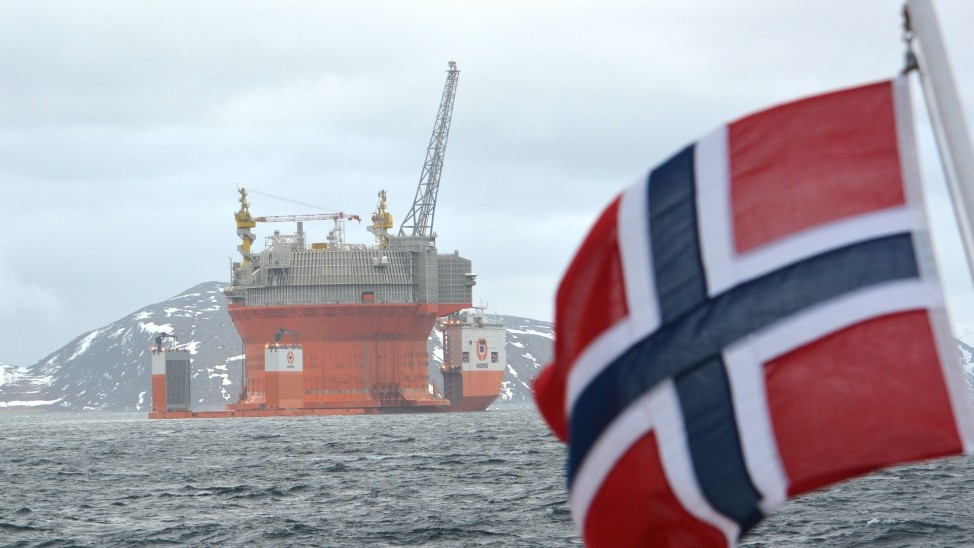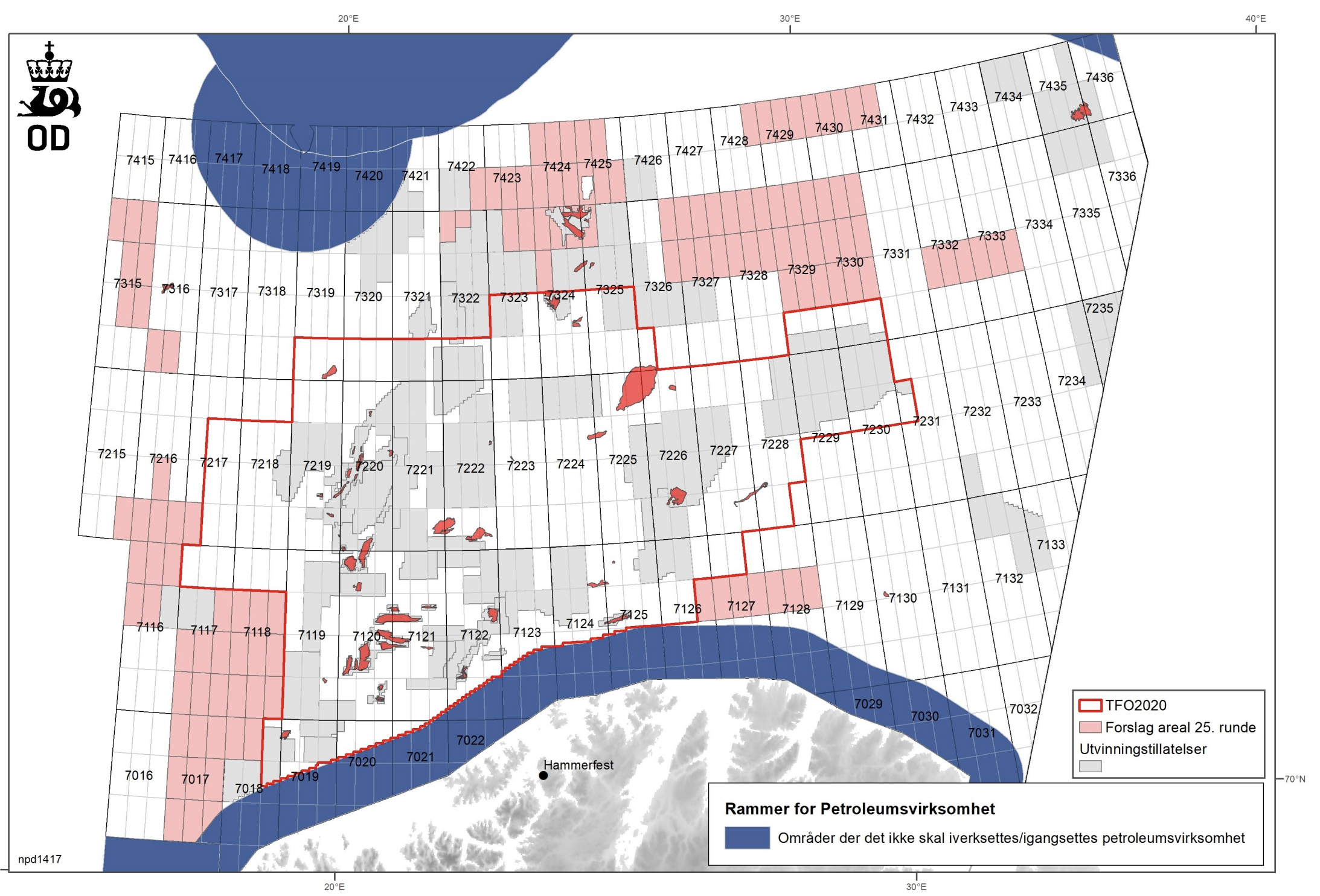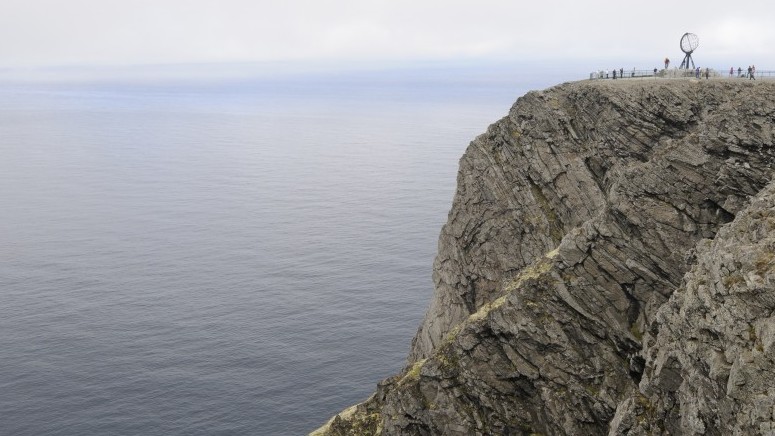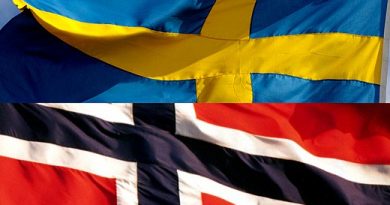Norway proposes to open 125 new oil exploration blocks in the Barents Sea

Environmentalists in Norway didn’t believe what they read when the Ministry of Petroleum and Energy on June 24 presented suggestion for the 25th Licensing Round.
Silje Ask Lundberg is head of Naturvernforbundet, Norway’s Friends of the Earth.
Lundberg states that Norway by this suggestion clearly shows the rest of the world that it doesn’t care at all, neither about the climate crisis nor the vulnerable Arctic eco-systems.
Record heatwave in Russian Arctic
Last weekend, Russia recorded an all-time heat record above the Arctic Circle. 38 degrees Celsius was measured in the village of Verkhoyansk in Siberia as part of a heatwave currently coloring weather-maps in the Siberian Arctic dark red.
Temperatures in the Barents Sea, where Norway believe it’s a good idea to open for more oil drilling, have also spiked in recent years. Both sea-temperatures and temperatures at Svalbard is peaking much higher than global increased average.
Frode Pleym, head of Greenpeace Norway is shocked by the suggested massive oil-drilling.
Tax benefits for Big Oil
In early June, the Norwegian Parliament decided to pump great sums into a support-package for the country’s oil industry. Tax benefits are to help the oilmen launch new projects, including in the Arctic.
The government sees the 25th Licensing Round as an important step for the industry.
“A steady supply of new acreage is crucial in order to maintain activity on Norway’s continental shelf,” said Minister of Petroleum and Energy, Tina Bru, in a prepared statement.
The ministry’ suggestion comes only a few week after the parliament decided there to set the so-called “ice edge”, maning the southern limit of how far south sea-ice is believed to come. Oil drilling should not take place north of the ice-edge.
Eight of the nine acreages suggested for new oil drilling are in the Barents Sea, while one area is in the Norwegian Sea.The eight Barents Sea acreages that until now have been unavailable for drilling have a total of 125 exploration blocks.

The world’s northernmost offshore oil drillings
About half of the suggested blocks are in the northern part of the Barents Sea at between 73°N and 74°N and will, if approved, be some of the northernmost offshore oil drillings in the world.
Seven of the proposed new blocks are just outside the coast of Finnmark, Norway’s northernmost region, bordering the coastal areas closed for oil-drilling. On a day with good visibility, an oil rig here could be visible from the North Cape, one of the most visited tourist traps in Northern Norway.

Some of the licenses are close to areas in the so-called Svalbard zone, likely to be disputed by neighboring Russia and other countries.
Russia argues that the Svalbard Treaty applies also to the Svalbard shelf and that Norway consequently has no exclusive right to open the area for drilling. Moscow has previously disputed licenses issued in both the 23rd and 22nd License Rounds.
In the 24th License Round proposed in 2017, Norway included 93 blocks in the Barents Sea.
The petroleum ministry asks for inputs to its latest plans and the hearing deadline is set to August 26.
Related stories from around the North:
Canada: What Russia’s $300B investment in Arctic oil and gas means for Canada, CBC News
Finland: Finland investigates oil leak risks from Baltic Sea shipwrecks, Yle News
Greenland: Greenland joins push to ban heavy fuel oil in the Arctic, Eye on the Arctic
Iceland: Iceland to restrict heavy fuel oil use in territorial waters, Eye on the Arctic
Norway: Norway’s Supreme Court to decide landmark climate case against Arctic oil in November, The Independent Barents Observer
Russia: Arctic oil plans in Norway and Russia disrupted amid COVID-19 crisis. The Independent Barents Observer
United Kingdom: Exemptions to possible Arctic HFO ban denounced by Indigenous orgs, environmental groups, Eye on the Arctic
United States: Wells Fargo becomes third major US bank to nix Arctic oil investment, Alaska Public Media



